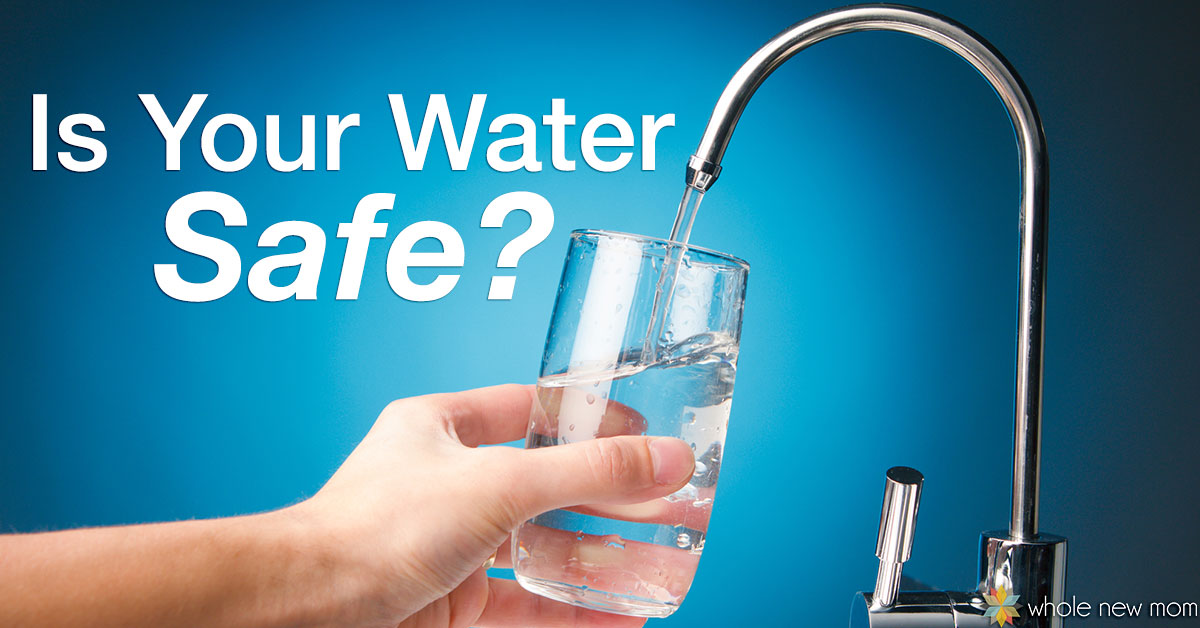Picture this: You’re enjoying a beautiful hike in the Colorado Rockies, the crisp mountain air filling your lungs, and you’re parched. You reach for your water bottle, take a long, refreshing swig, and then… a moment of hesitation. Is this water truly safe to drink? A wave of doubt washes over you.

Image: greenssteel.com
This is a question that many Colorado residents and visitors grapple with, especially those new to the state. While Colorado is known for its breathtaking scenery and abundant natural resources, understanding the safety of its tap water is crucial to ensuring your well-being. In this comprehensive guide, we’ll delve into the intricacies of Colorado’s tap water system, address potential concerns, and empower you with the information you need to make informed decisions about your water consumption.
A State of Diverse Water Sources
Colorado boasts a diverse array of water sources, ranging from snow-capped mountains to vast plains. This unique geography, however, presents unique challenges in ensuring consistent water quality.
The state’s primary water source is the Colorado River Basin, which stretches westward from the Rocky Mountains, encompassing the western third of Colorado. This basin provides water to major cities like Denver, Colorado Springs, and Grand Junction. However, the Colorado River is facing increasing pressures from climate change, drought, and competition for water resources.
Additionally, Colorado is home to numerous groundwater sources, which serve as vital reservoirs for smaller communities and agricultural regions. These aquifers, while plentiful, are susceptible to contamination from pollutants like fertilizers, pesticides, and industrial waste.
Navigating the Water Treatment Process
To ensure the safety of its tap water, Colorado mandates rigorous water treatment processes at both the municipal and county levels. These processes typically involve a multi-layered approach, including:
- Coagulation and Flocculation: Impurities in the raw water, such as suspended solids, are clumped together into larger particles. These particles then settle to the bottom of the water source.
- Sedimentation: The heavier particles settle to the bottom of the water source, removing them from the water supply.
- Filtration: The remaining impurities are removed by passing the water through a series of filters, such as sand filters or membrane filters.
- Disinfection: Bacteria and viruses are killed by adding chlorine, ozone, or ultraviolet light to the water.
While this treatment process is effective at removing most contaminants, it’s important to note that some emerging contaminants, such as pharmaceuticals and pesticides, can pose challenges for traditional treatment methods.
Exploring Potential Concerns: What to Watch Out for
The vast majority of Colorado’s tap water is safe to drink. However, there are some potential concerns that should be considered, particularly in specific regions:
- Lead in Older Pipes: In older homes and buildings, lead pipes can leach lead into the water supply. This is a particular concern in areas with older infrastructure.
- Agricultural Runoff: Runoff from farms and agricultural fields can introduce fertilizers, pesticides, and other contaminants into the water supply, especially in rural areas.
- Industrial Contamination: Industrial facilities can release pollutants into the water supply, especially in areas with heavy industrial activity.
- Climate Change Impacts: Drought and changing weather patterns can impact water quality and availability, potentially leading to increased contamination and reduced water supplies.

Image: wikimonks.com
Decoding Your Water Quality Report
Every year, Colorado’s water systems release a Consumer Confidence Report (CCR), commonly known as a water quality report. This report provides detailed information about the quality of your tap water, including the presence of contaminants, treatment methods, and any violations detected. It’s a valuable resource for understanding the health of your water.
Reviewing the CCR can help you identify potential concerns, understand the effectiveness of treatment processes, and recognize potential areas for improvement. This information can empower you to take proactive steps to protect your health and water quality.
Seeking Guidance from Experts
If you have concerns about the safety of your tap water, reaching out to local experts is a wise step. Your local water utility, the Colorado Department of Public Health and Environment (CDPHE), and the Environmental Protection Agency (EPA) provide valuable resources and guidance.
The CDPHE offers a wealth of information about water quality in Colorado, including guidance on testing for contaminants, understanding water quality reports, and accessing drinking water advisories. The EPA provides comprehensive information on drinking water regulations, contaminant levels, and health effects. By engaging with these experts, you can gain a deeper understanding of your specific water situation and receive tailored recommendations.
Taking Action: Simple Steps for Safe Water
Even if your tap water is tested and deemed safe, there are steps you can take to further enhance its quality:
- Install a Water Filter: Using a water filter, such as a pitcher filter or faucet filter, can remove additional contaminants and improve the taste and odor of your water.
- Flush Your Pipes: Flushing your cold water taps for a few minutes each morning can help remove any stagnant water that may have collected in the pipes overnight.
- Replace Old Pipes: If your home has old lead pipes, consider replacing them with copper or plastic pipes.
- Limit Water Usage: Conserving water is not only beneficial for the environment but also reduces the strain on water systems. Simple steps like taking shorter showers, fixing leaky faucets, and watering lawns efficiently can make a significant difference.
Is Colorado Tap Water Safe To Drink
Empowering Yourself for a Safer Water Future
Staying informed about the safety of Colorado’s tap water is an essential part of protecting your health and well-being. By understanding the sources, treatment processes, and potential concerns, you can make informed decisions about your water consumption. Embrace the power of knowledge, engage with experts, and utilize the available resources to ensure a safer future for yourself and your community.
As you quench your thirst with the refreshing water flowing from your tap, you can do so with confidence, knowing that you’ve taken the necessary steps to safeguard this precious resource.





